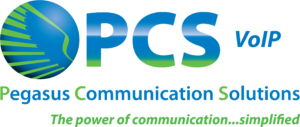
Average Hold Time (AHT), also known as on-hold time, is a common contact center metric which measures the average time a customer spends on hold before speaking to an agent. The average hold time helps measure efficiency and customer response rates.
For a positive customer experience, it is important that a customer spends less time on hold. The AHT is calculated by adding up all inbound customer call and message hold times divided by the number of inbound customer calls answered by the agent.
Many customers are only willing to wait on hold for two minutes. Other customers who hang up before reaching an agent will never call back. This shows how critical it is to your business to keep call hold times as short as possible.
To reduce the Average Hold Time, companies can:
- Increase their customer handling agents to meet the demand
- Automate the initial call process
- Invest in a contact center solution that enables agents to respond faster
If your business uses a hosted VoIP service, set up any of the CRM integrations that are available to you.
- A HubSpot integration can match an incoming caller with her HubSpot record and automatically present it on your call agent’s screen. With the record in front of him, the agent can greet the caller by name and immediately get into her issue.
- A Zendesk integration can automatically create a Zendesk ticket, assign it to the call agent, and display it on his screen when he answers an incoming call. The ticket comes pre-populated with key info (the ticket number, date and time of the call, etc.) so he doesn’t have to spend call time manually creating the ticket and typing in the data.
Integrations such as these can handle basic housekeeping tasks, enabling your agents to complete calls quicker and move onto the next one.
Skill-based routing is a call strategy that matches a caller with an agent who is best suited to address his questions or issues—think a Spanish-speaking caller who is connected with a Spanish-speaking call agent. By implementing this routing feature in your business phone system, you can ensure that the caller only has to speak with one agent, one time, to have his issue resolved. You can also settle the caller’s issue on the first contact, allowing your agents to quickly move through the calls waiting on hold in the queue.
The easiest way to immediately improve AHT is to uncover and determine the root cause of interactions that increase the length of agent conversations. To do that, it starts with 100% call coverage, to ensure that every interaction is monitored and identified.
Focus on your internal knowledge base
In some cases, AHT isn’t just impacted by agent performance, but rather the resources available to them. That’s where a dynamic, easy-to-navigate internal knowledge base comes into play. Agents need to be able to quickly search and find the answers to their questions, and additional content to handle more complex queries.
Networks, whether voice or data, are designed around many different variables. Two of the most important factors that you need to consider in network design are service and cost. Service is essential for maintaining customer satisfaction. Cost is always a factor in maintaining profitability. One way that you can factor in some of the service and cost elements in network design is to optimize circuit utilization.
Voice over IP is one of the most popular applications in broadband access networks. It is anticipated that the characteristics of call holding times (CHTs) for VoIP calls will be quite different from traditional phone calls.
